Eurasian Beaver
- February 23, 2024
- 0 comment
Once mighty rulers of Eurasian waterways, the Eurasian beaver, also known as the European beaver, has a tale of resilience woven into its thick brown fur. Driven to near extinction by relentless hunting for its valuable pelt and castoreum, this large, semi-aquatic rodent stood on the brink of oblivion. But from the ashes, a comeback story emerged. Through conservation efforts, the Eurasian beaver has clawed its way back, reclaiming its role as an ecosystem engineer extraordinaire.

Imagine a creature that uses its powerful orange teeth to gnaw down trees, not for personal gain, but to reshape entire landscapes. That’s the Eurasian beaver, wielding its natural tools to construct dams and lodges, transforming rivers into havens for wetland habitats. These industrious architects create havens not just for themselves, but for a multitude of species, from fish and frogs to birds and insects.
Life for a Eurasian beaver revolves around family. Mates stay together for life, raising their kits in cozy lodges nestled amidst the dams they’ve built. Their herbivorous diet keeps them busy nibbling on bark, leaves, and aquatic plants, contributing to the natural cycle of growth and renewal.
| Category | Specification |
|---|---|
| Scientific Name | Castor fiber |
| Type | Rodent |
| Habitat | Freshwater rivers, lakes, and wetlands |
| Distribution | Europe and Asia |
| Weight | 16 – 30 kg (35 – 66 lbs), with exceptional individuals reaching 50+ kg (110+ lbs) |
| Length | 80 – 100 cm (31 – 39 in) |
| Tail Length | 25 – 50 cm (9.8 – 19.7 in) |
| Lifespan | Up to 25 years in the wild |
| Diet | Herbivore, primarily bark, leaves, and aquatic plants |
| Social Structure | Monogamous, live in family groups |
| Gestation Period | 60 – 128 days |
| Litter Size | 1 – 6 kits, average 3 |
| Sexual Maturity | 1.5 – 3 years |
| Distinguishing Features | Large orange incisors, broad flat tail, webbed hind feet, thick fur |
| Ecological Role | Ecosystem engineer, creates and maintains wetlands, benefits biodiversity |
| Conservation Status | Least Concern (IUCN) |
The Mighty Architect of Waterways
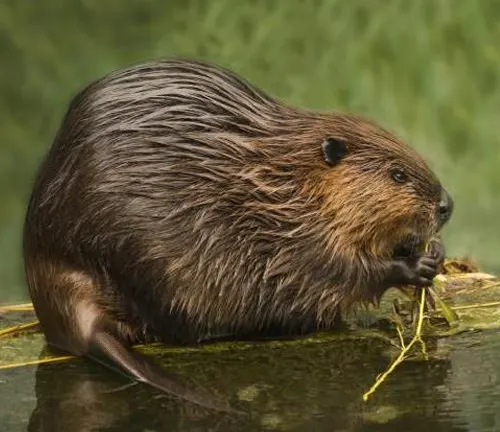
The Eurasian beaver, also known as the European beaver, is not just a cute, furry creature munching on bark. This impressive rodent is an ecosystem engineer extraordinaire, shaping landscapes and influencing biodiversity with its industrious spirit. Let’s delve into the fascinating world of the Eurasian beaver, exploring its physical prowess, preferred habitats, unique social structures, and the challenges it faces in a changing world.
Physical Characteristics: A Rodent Built for Building
Equipped with powerful orange incisors that never stop growing, the Eurasian beaver is a force to be reckoned with. Its stocky body, reaching up to a meter in length, is covered in thick, waterproof fur that keeps it warm in icy waters. Its broad, flat tail acts like a rudder while swimming and helps it balance on land. But the most striking feature is its webbed hind feet, perfectly adapted for paddling and maneuvering in its aquatic home.

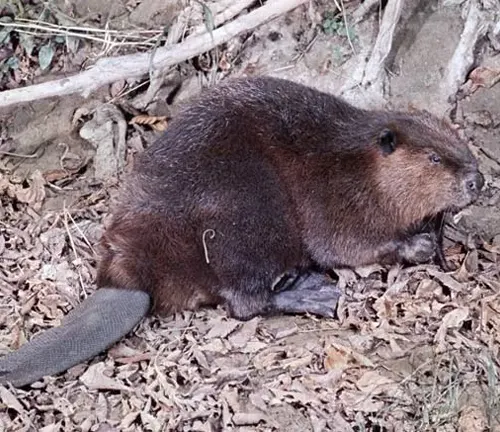

- Size: Eurasian beavers are typically larger than their North American counterparts, with adults ranging from 80 to 100 centimeters (31 to 39 inches) in length, excluding the tail, which can add an additional 25 to 38 centimeters (10 to 15 inches).
- Weight: On average, Eurasian beavers weigh between 11 to 30 kilograms (24 to 66 pounds), although some individuals may exceed these ranges.
- Body Shape: They have a stocky, barrel-shaped body with short legs. Their hind legs are longer than their front legs, which aids in swimming.
- Coat: Their fur is dense and waterproof, consisting of two layers: a soft, dense undercoat for insulation and longer guard hairs that repel water. The coloration of their fur can vary, typically ranging from reddish-brown to dark brown.
- Tail: One of the distinctive features of beavers is their large, flat, and scaly tail. This tail serves various purposes, including aiding in swimming, storing fat reserves, and communicating through tail slaps on the water’s surface.
- Teeth: Like all rodents, beavers have continuously growing incisors. Their incisors are large, orange in color, and are used for gnawing through wood, their primary food source, as well as for building dams and lodges.
- Eyes and Ears: Eurasian beavers have small eyes and ears, which can be closed underwater to protect them while swimming.
- Adaptations for Aquatic Life: They have webbed hind feet for efficient swimming and digging. Their nostrils and ears can close when submerged underwater. Additionally, they have a nictitating membrane, a transparent eyelid, that protects their eyes while swimming.
- Sexual Dimorphism: Male beavers (bucks) are generally larger than females (does), but otherwise, they look similar.
Habitat and Distribution: From Rivers to Wetlands
Imagine a network of dams and lodges transforming a peaceful stream into a vibrant wetland. This is the Eurasian beaver’s masterpiece. They prefer freshwater rivers, lakes, and wetlands, where they can find ample trees for building and aquatic plants for sustenance. Once widespread across Europe and Asia, their range drastically shrunk due to hunting. However, conservation efforts have led to a remarkable comeback, with populations thriving in parts of Spain, Scandinavia, and even reintroduced in places like Scotland.
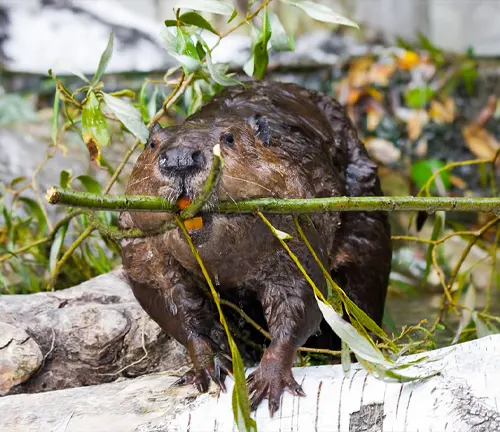
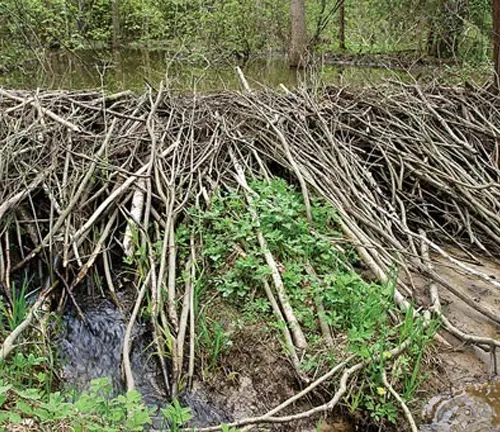
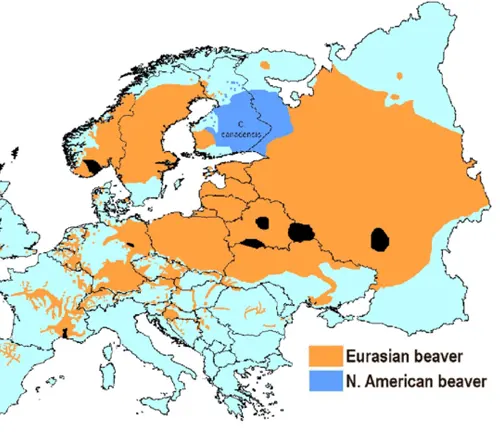
- Aquatic Habitats: Eurasian beavers are primarily found in freshwater habitats such as rivers, streams, lakes, ponds, and marshes. They prefer areas with slow-moving or still water that is bordered by a variety of vegetation, which provides both food and materials for building dams and lodges.
- Riparian Zones: Beavers are keystone species in riparian ecosystems, as their activities significantly influence the structure and function of these habitats. Their dam-building behavior creates wetlands and alters water flow, which can have profound effects on biodiversity and ecosystem services.
- Range: Historically, Eurasian beavers were widespread across Europe and Asia, from the British Isles in the west to the Pacific coast of Russia in the east. However, due to overhunting and habitat loss, their populations were greatly reduced by the early 20th century, and they became locally extinct in many areas.
- Reintroduction and Recovery: Conservation efforts, including reintroduction programs and habitat restoration, have led to the recovery of Eurasian beaver populations in several countries. Reintroductions have been successful in countries such as Norway, Sweden, Germany, France, the United Kingdom, and others.
- Current Distribution: As of the early 21st century, Eurasian beavers have recolonized many parts of their former range, with significant populations present in countries such as Norway, Sweden, Finland, Germany, France, Poland, Belarus, Russia, and others. They have also been reintroduced to areas where they were previously extinct, such as Scotland and England.
- Habitat Requirements: While beavers are adaptable and can inhabit a variety of aquatic habitats, they require access to suitable food sources, building materials for dams and lodges, and areas for burrowing. Maintaining connectivity between water bodies is also important for dispersal and genetic exchange among populations.
Behavior and Diet: A Family of Busy Architects and Herbivores
Family is at the heart of the Eurasian beaver’s world. Mates stay together for life, raising their kits in cozy, underwater lodges they meticulously construct within dams. Their days are filled with industrious activity. They use their sharp teeth to gnaw down trees, not for personal gain, but to create dams that control water flow and protect their lodges. These dams also inadvertently create wetlands, providing critical habitat for diverse species. As herbivores, they feast on bark, leaves, and aquatic plants, playing a crucial role in maintaining the balance of the ecosystem.

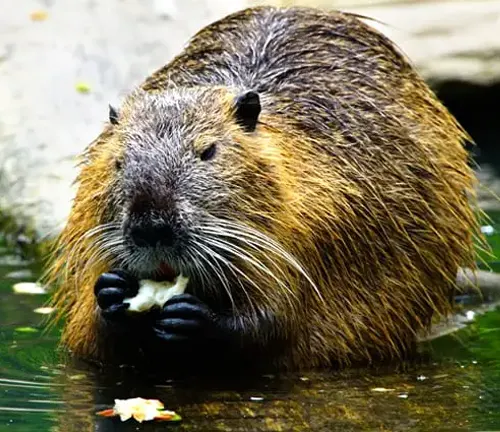

- Nocturnal Activity: Beavers are primarily nocturnal, meaning they are most active during the night. This behavior helps them avoid predators and conduct their activities with reduced risk.
- Social Structure: Eurasian beavers typically live in family groups consisting of a monogamous pair (adult male and female) and their offspring from previous years. They are cooperative breeders, with offspring often helping to raise younger siblings.
- Communication: Beavers communicate with each other through vocalizations, such as grunts and whistles, as well as through body language and scent marking. They use their large, flat tails to slap the water as a warning signal to other beavers.
- Dams and Lodges: One of the most remarkable behaviors of beavers is their construction of dams and lodges. Dams are built across rivers and streams to create deep ponds that provide protection from predators and access to food during winter months. Lodges are constructed from sticks, mud, and vegetation and serve as the beaver’s home.
- Feeding Behavior: Beavers are herbivores with a diet primarily consisting of bark, twigs, leaves, and aquatic plants. They are known for their ability to fell trees, particularly deciduous species such as aspen, willow, and birch, using their powerful incisors. Beavers often store branches and logs underwater near their lodges to provide a winter food supply.
- Territoriality: Beavers defend their territories, particularly their lodges and food caches, from intruders. They may engage in aggressive encounters with other beavers to establish dominance and maintain control over resources.
- Seasonal Behavior: Beavers exhibit seasonal variations in behavior, particularly related to food storage and breeding. They are most active during the warmer months when food is abundant and spend much of the winter inside their lodges, relying on stored food reserves.
- Swimming and Diving: Beavers are strong swimmers and can remain submerged for several minutes at a time. They use their webbed hind feet and powerful tails to propel themselves through the water and are capable of diving to feed on underwater vegetation.
Social Structure and Communication: Teamwork Makes the Dream Work
Cooperation is key for these industrious creatures. Beavers communicate through vocalizations, scent marking, and body language. They work together to build and maintain their dams and lodges, ensuring the safety and well-being of their family. This strong social structure allows them to thrive in groups, with each member contributing to the collective success of the colony.
Family Units
Eurasian beavers typically live in family groups, also known as colonies or colonies. These family units consist of a monogamous breeding pair, their offspring from previous years, and occasionally subadults or unrelated individuals. The family structure is crucial for cooperative behaviors such as building and maintaining lodges and dams, as well as raising offspring.

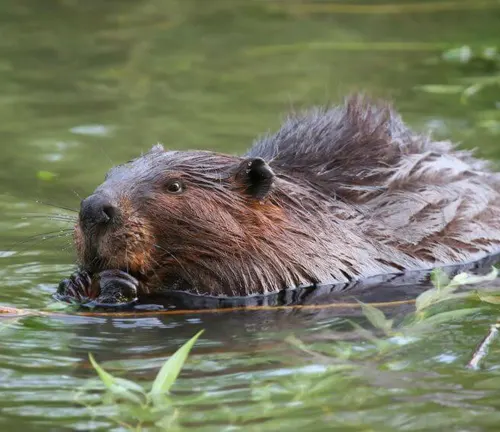
Parental Care
Both parents participate in caring for their offspring. Young beavers, known as kits, remain with their parents for the first one to two years of their lives, during which time they learn essential skills such as foraging, building, and communication.
Communication
Beavers use various vocalizations, body language, and scent marking to communicate with each other:
- Vocalizations: Beavers produce a range of vocalizations, including grunts, whistles, and alarm calls, which serve to convey information about potential threats, territory boundaries, and social interactions.
- Tail Slapping: One of the most recognizable forms of communication is tail slapping, where a beaver forcefully strikes the water’s surface with its flat tail. This behavior is used as a warning signal to alert other beavers of danger and is often accompanied by vocalizations.
- Scent Marking: Beavers have scent glands located near their anal region, which they use to mark territory boundaries and communicate reproductive status. Scent marking helps establish social hierarchies within colonies and facilitates communication between individuals.
Cooperative Behavior
Beavers exhibit remarkable cooperative behavior within family groups, working together to construct and maintain lodges and dams, gather food, and care for offspring. This cooperative behavior enhances their chances of survival and contributes to the overall success of the colony.
Life Cycle: From Kits to Colony Leaders
The journey of a Eurasian beaver begins with a gestation period of around four months. Kits are born in the spring, blind and vulnerable, but quickly learn the ways of the colony. By their second year, they are independent but often remain close to their family, learning the art of dam building and foraging. They reach sexual maturity around three years old and may even inherit leadership roles within the colony, perpetuating the legacy of this remarkable species.
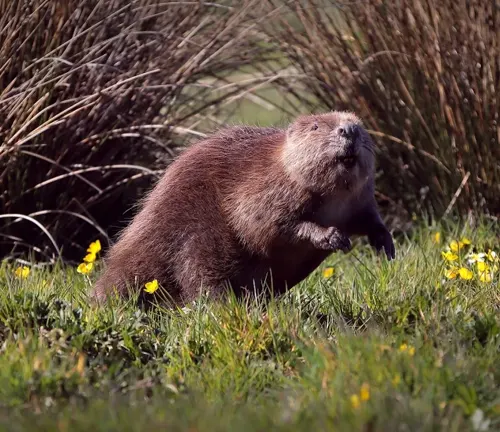
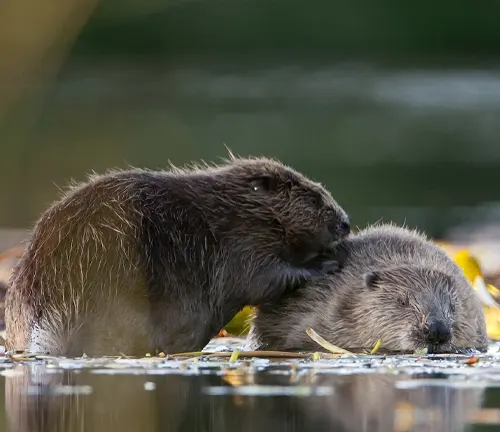
- Birth and Early Development:
- Eurasian beaver kits are born in late spring or early summer after a gestation period of about 105 to 107 days.
- A typical litter consists of two to four kits, although larger litters are possible.
- Kits are born blind, hairless, and completely dependent on their parents for care and nourishment.
- Both parents participate in caring for the kits, providing them with warmth, protection, and milk.
- Juvenile Stage:
- Kits begin to explore their surroundings and learn essential skills such as swimming, diving, foraging, and grooming.
- They gradually wean off their mother’s milk and transition to solid food, primarily consisting of vegetation.
- Juvenile beavers remain with their parents for one to two years, during which time they learn important behaviors and social dynamics within the family group.
- Subadult Stage:
- As they reach sexual maturity, typically around two to three years of age, subadult beavers may disperse from their natal colony in search of new territories and potential mates.
- Dispersal helps prevent inbreeding and promotes gene flow between populations.
- Reproductive Stage:
- Once established in a suitable habitat, adult beavers become reproductively active.
- Breeding typically occurs in late winter or early spring, with mating taking place in the water.
- Female beavers give birth to a single litter of kits each year, usually in a specially constructed den within the lodge.
- Both parents participate in raising the kits, providing them with protection, warmth, and food.
- Adult Stage:
- Adult beavers play essential roles within their family groups, contributing to dam and lodge construction, foraging, territory defense, and care of offspring.
- They may remain with their natal colony or establish their own territories and family units.
- Beavers can live for up to 10 to 15 years in the wild, although some individuals may live longer in captivity.
- Senescence and Death:
- As beavers age, they may experience declines in physical condition and reproductive capacity.
- Senescent individuals may become more vulnerable to predation, disease, and environmental stressors.
- Eventually, beavers may succumb to old age or other factors, completing the life cycle of the species.
Challenges and Threats: A Delicate Balance
Despite their impressive comeback, the Eurasian beaver still faces challenges. Habitat loss due to human development, pollution, and climate change pose significant threats. Additionally, conflicts can arise with human activities near their dams, requiring careful management and mitigation strategies. Conservation efforts remain crucial to ensure the continued success of this keystone species and the vibrant ecosystems it helps to create.
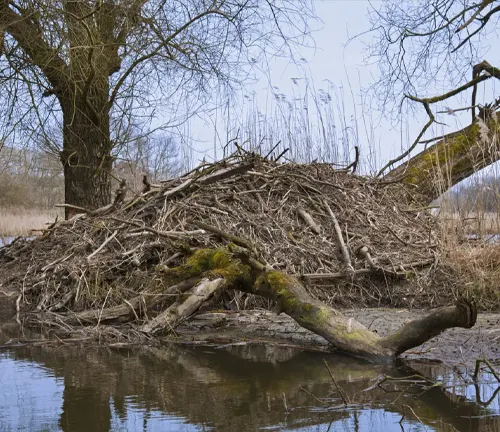
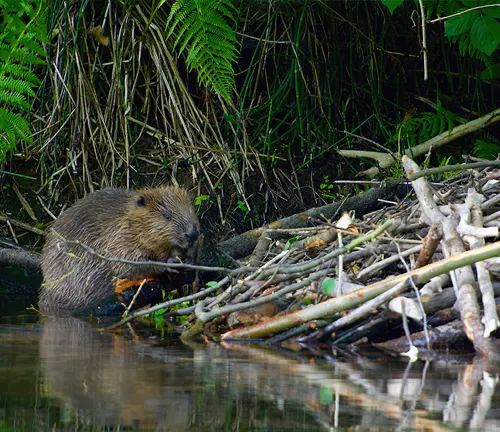
- Habitat Loss and Fragmentation: The conversion of natural habitats for agriculture, urbanization, and infrastructure development has led to habitat loss and fragmentation, reducing the availability of suitable habitats for beavers. Maintaining and restoring riparian habitats is crucial for supporting healthy beaver populations.
- Conflict with Human Activities: Beavers often come into conflict with human activities, particularly in areas where they cause damage to crops, trees, and infrastructure through dam-building and flooding. Balancing the needs of beavers with human interests requires implementing effective mitigation measures, such as flow devices, fencing, and habitat management strategies.
- Water Management: Beavers play important roles in regulating water flow, improving water quality, and creating wetland habitats. However, their activities can sometimes conflict with human water management objectives, such as flood control and irrigation. Finding solutions that integrate beaver ecology into water management plans is essential for achieving mutually beneficial outcomes.
- Disease and Parasites: Like all wildlife species, beavers are susceptible to diseases and parasites, which can impact individual health and population dynamics. Monitoring and managing disease outbreaks are important for maintaining healthy beaver populations.
- Climate Change: Climate change poses additional challenges for beavers and their habitats, including altered precipitation patterns, increased frequency of extreme weather events, and habitat degradation. Adapting conservation strategies to address the impacts of climate change is critical for the long-term survival of beavers and their ecosystems.
- Human Perceptions and Attitudes: Public perceptions and attitudes toward beavers can influence conservation efforts and management decisions. Educating the public about the ecological importance of beavers, promoting coexistence strategies, and involving local communities in conservation initiatives can help foster positive attitudes toward these animals.
- Legal Protections and Management: Establishing legal protections and management measures is essential for conserving beaver populations and their habitats. Implementing sustainable harvest quotas, habitat restoration projects, and research programs can contribute to the conservation and management of this species.
Different Species
Eurasian Beaver
(Castor fiber):
Native Range: Europe and parts of Asia.
Physical Characteristics: Generally larger and heavier than North American beavers, with a broader skull and longer nasal bones.
Habitat: Prefers freshwater habitats such as rivers, streams, lakes, and ponds, with a preference for slow-moving or still water.
Conservation Status: Classified as a species of “Least Concern” by the International Union for Conservation of Nature (IUCN), although some populations are locally threatened or endangered.
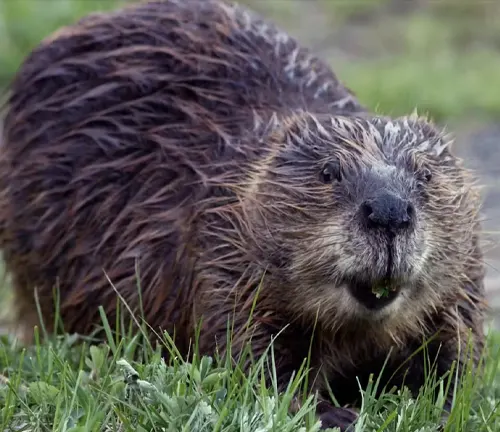
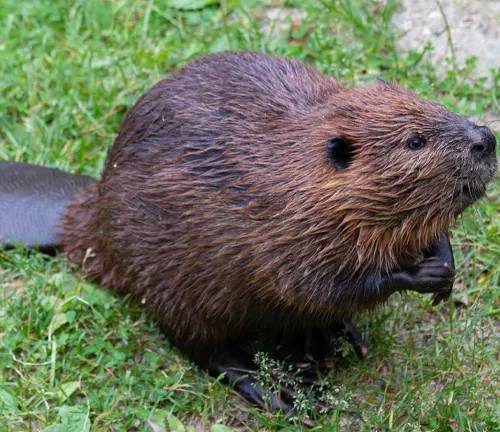
North American Beaver
(Castor canadensis):
Native Range: North America, from northern Mexico to the Arctic Circle, including the United States and Canada.
Physical Characteristics: Slightly smaller and lighter than Eurasian beavers, with a narrower skull and shorter nasal bones.
Habitat: Found in a wide range of aquatic habitats, including rivers, streams, ponds, marshes, and wetlands, with a preference for areas with abundant woody vegetation.
Conservation Status: Classified as a species of “Least Concern” by the IUCN, although habitat loss and fragmentation, as well as trapping for fur, have historically threatened some populations.
Frequently Asked Questions (FAQs)
- What is the Eurasian beaver?
The Eurasian beaver (Castor fiber) is a large semi-aquatic rodent native to Europe and parts of Asia. It is known for its dam-building behavior, which creates wetland habitats and influences freshwater ecosystems. - Where does the Eurasian beaver live?
Eurasian beavers inhabit freshwater habitats such as rivers, streams, lakes, ponds, and marshes across Europe and Asia. They prefer areas with abundant vegetation for food and building materials. - What does the Eurasian beaver eat?
Eurasian beavers are herbivores, primarily feeding on a diet of bark, twigs, leaves, aquatic plants, and roots. They are particularly fond of deciduous tree species such as willow, aspen, and birch. - Why do Eurasian beavers build dams?
Beavers build dams to create deep ponds that provide protection from predators, access to food during winter months, and suitable habitat for raising offspring. Dams also help regulate water flow and maintain water levels in their habitats. - How do Eurasian beavers communicate?
Eurasian beavers communicate through a variety of vocalizations, body language, and scent marking. They use vocalizations such as grunts and whistles, tail slapping on the water’s surface, and scent marking with anal gland secretions to convey information to other beavers. - Are Eurasian beavers endangered?
Eurasian beavers were once heavily hunted for their fur and castoreum, a secretion used in perfumes and medicines, leading to population declines and local extinctions. However, conservation efforts have led to their recovery in many areas, and they are now classified as a species of “Least Concern” by the International Union for Conservation of Nature (IUCN). - Do Eurasian beavers migrate?
While Eurasian beavers may disperse from their natal colonies in search of new territories and mates, they are not known for long-distance migrations. Dispersal typically occurs among subadult individuals within relatively localized ranges. - What is the lifespan of a Eurasian beaver?
Eurasian beavers can live for up to 10 to 15 years in the wild, although some individuals may live longer in captivity. Factors such as predation, disease, habitat quality, and human activities can influence their lifespan. - How do Eurasian beavers impact their ecosystem?
Eurasian beavers are considered keystone species in riparian ecosystems, playing important roles in creating wetland habitats, regulating water flow, improving water quality, and enhancing biodiversity. Their dam-building activities can have significant ecological impacts on their habitats and associated species. - Can Eurasian beavers be kept as pets?
Keeping Eurasian beavers as pets is generally not recommended or legal in many areas due to their specialized habitat requirements, social structure, and potential for aggressive behavior. Additionally, beavers are wild animals and may pose risks to humans and other pets.


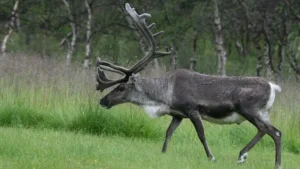
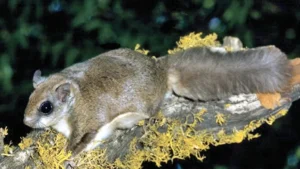
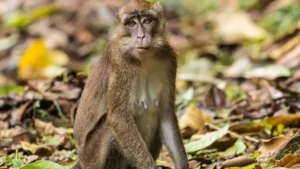

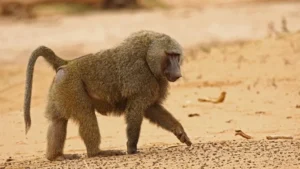

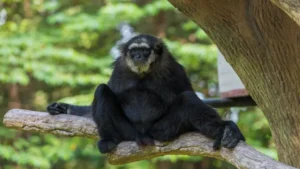
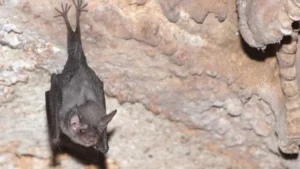

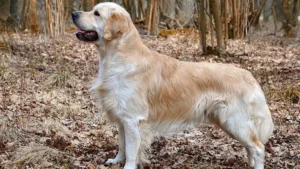


Leave your comment